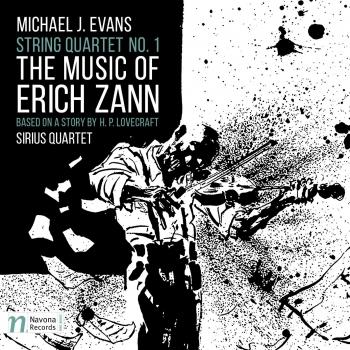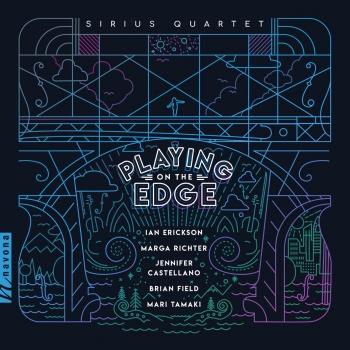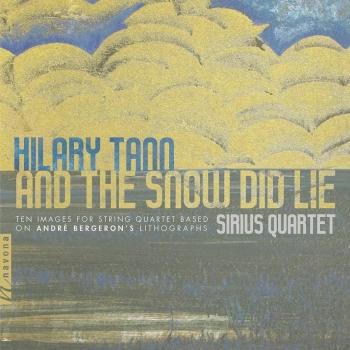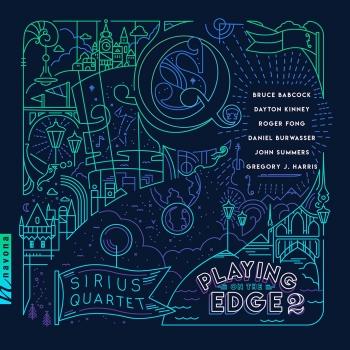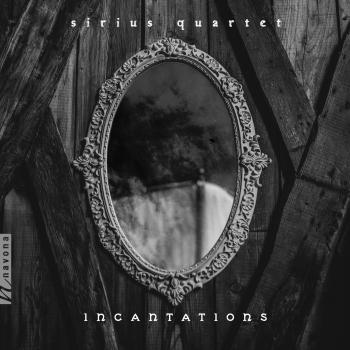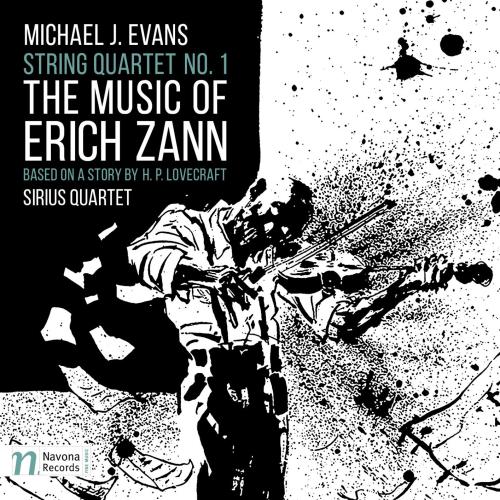
Evans: String Quartet No. 1 The Music of Erich Zann Sirius Quartet
Album Info
Album Veröffentlichung:
2017
HRA-Veröffentlichung:
10.02.2017
Label: Navona
Genre: Classical
Subgenre: Chamber Music
Interpret: Sirius Quartet
Komponist: Michael J. Evans
Das Album enthält Albumcover Booklet (PDF)
- Michael J. Evans (1964): String Quartet No. 1 The Music of Erich Zann:
- 1 Scene 1 02:07
- 2 Scene 2 04:49
- 3 Scene 3 09:43
- 4 Scene 4 18:08
- 5 Scene 5 05:10
- 6 Scene 6 07:24
- 7 Scene 7 08:44
- 8 Scene 8 11:54
- 9 Epilogue 01:15
Info zu Evans: String Quartet No. 1 The Music of Erich Zann
Composer Michael J. Evans’ "The Music of Erich Zann" is a startling and surreal musical interpretation of H.P. Lovecraft’s 1922 tale of the eponymous violist – a mysterious old man who seemingly protects himself from dark, magical forces by playing the viol.
Evans is a gifted melodist, and his other PARMA Recordings and Navona albums showcase his predilections for the rich textures and harmonic language of late European Romanticism. In the "The Music of Erich Zann", however, Evans departs from these tendencies, to an extent, in order to convey a clear, taut, and compelling musical narrative full of exotic sounds that capture the mysticism and drama of Lovecraft’s story.
Evans sets an ominous stage for the piece in its first movement, which alternates between slow, dark counterpoint in the cello and violin and rhythmic interjections of col legno battuto – a technique that calls for string players to play their instruments by hitting them with the wood of their bows. In this introduction, the quartet strains and creaks, embodying the ghostly, derelict boarding house that serves as the setting of Lovecraft’s story.
The tale is told retrospectively through the eyes of a university student who happens upon the tenement in an unnamed European city. The story’s narrator seems not to be represented by a specific theme in Evans’ interpretation, but he clearly marks the otherworldly musical performances of his elderly neighbor by adding electronic delay and other sounds to the quartet’s performance.
This special effect is the most extreme in Evans’ aforementioned palette of evocative and unusual sounds, which also includes glissandi, harmonics, and, most powerfully, a variety of sophisticated rhythmic textures that suggest the paranormal characteristics of Lovecraft’s boarding house. Evans also uses these sonic markers with irreproachable skill to build dramatic tension and lead the listener into the story’s climactic scene, the apex of which is made more frightening by a human scream.
Here, the dark stakes of Lovecraft’s story violate the abstraction of Evans’ purely musical setting and seemingly become real. The moment is jarring and visceral – a tremendously effective aural expression of the confrontation that takes place between evil forces and Lovecraft’s main characters. Evans’ piece ends almost exactly as it began, which invites the listener to wonder the same thing as Lovecraft’s narrator who, after years of searching, cannot find the mysterious boarding house: ‘was this all a dream?’.
Sirius Quartet
Sirius Quartet
Internationally acclaimed veterans of contemporary music, Sirius Quartet creates unforgettable musical events that combine exhilarating repertoire with unequaled improvisational fire. The group’s forward-thinking, genre-defying approach with collaborations in post-rock, avant-jazz and electronic music makes labels like ‘New Music’ sound passé.
Born and bred in NYC’s downtown music scene, Sirius has performed at major venues around the globe. Having premiered works by the likes of Phil Kline, Uri Caine and Richard Einhorn, Sirius pushes beyond the conventional vocabulary of string instruments with bold, original works by its own members, incorporating improvisation, extended techniques and undeniable grooves. These conservatory-trained performer/composers shine with precision, soul and a raw energy rarely witnessed in concert.
The quartet has performed at many important US venues, including Lincoln Center’s Alice Tully Hall, Merkin Concert Hall, LACMA, the Andy Warhol Museum (co-presented by Music on the Edge), Tribeca New Music, American Composers Alliance Music Festival, Chelsea Music Festival and The Kitchen. International appearances include the 2013 Stuttgart Jazz Fest, the 2013 Beijing Music Festival, Bern University of the Arts, the National Academy in Ochsenhausen, the 2012 Tianjin International Jazz Festival, the University of Music and Theater in Munich, the 2011 Taichung Jazz Festival, Köln’s Musik Triennale, and Musique Actuelle in Victoriaville, Canada.
Sirius Quartet has also shared studio and stage with the likes of Diane Reeves, Billy Martin (Medeski Martin and Wood), Jeremy Pelt, John Zorn, Uri Caine, John Escreet, Mike Block, Theo Bleckmann, John Patitucci, Ivo Perelman, Matthew Shipp, Nick Didkovsky, Mikael Karlsson, Elliot Sharp, Linda Oh and many others.
With their latest album Colors of the East, Sirius Quartet puts forward the explosive, genre-defying compositions of violinist Gregor Huebner on full display. The title track is a piece inspired by Huebner’s own Romani heritage, rife with Balkan melodies and odd-metered grooves galore. Colors of the East sees the quartet’s ranks bolstered by the addition of accordion virtuoso Peter Stan and upright powerhouse Pascal Niggenkemper. Rounding out the album is Huebner’s String Quintet, a labyrinthine trip through the dissonant sound worlds of the classical avant-garde and modern jazz, and his New York Suite for string quartet, a homage to the city that Huebner has called home for the last 20 years; each movement a sonic snapshot of a different NYC neighborhood or locale. These pieces feature Gregor’s brother Veit Huebner on bass, and Sirius alumnus Mike Block on cello, respectively.
Booklet für Evans: String Quartet No. 1 The Music of Erich Zann










